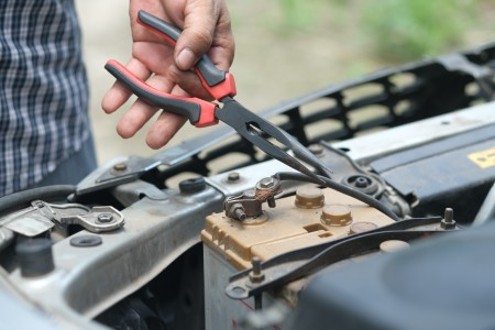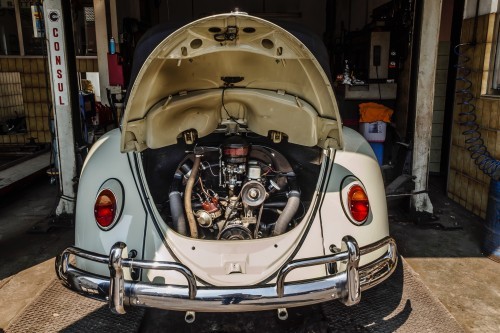The fuel pump is an essential part of a car’s fuel delivery system since it is crucial to making sure the engine gets the gasoline it needs to run effectively. The fuel pump is intended to switch on when you turn the ignition key, transferring fuel from the tank to the engine. The combustion process that drives your car depends on this smooth operation. However, there are times when the fuel pump does not activate with ignition, which can cause operational concerns and serious engine problems.
Importance of the Fuel Pump Turning on with Ignition for Proper Engine Functioning:
The fuel pump is an essential part of a car’s fuel delivery system since it is crucial to making sure the engine gets the gasoline it needs to run effectively. The fuel pump is intended to switch on when you turn the ignition key, transferring fuel from the tank to the engine. The combustion process that drives your car depends on this smooth operation. However, there are times when the fuel pump does not activate with ignition, which can cause operational concerns and serious engine problems.
- Fuel Delivery: The fuel pump’s main responsibility is to provide a steady, pressurized flow of gasoline from the fuel tank to the combustion chamber of the engine. The combustion process, which creates the power to propel the car, depends on this. Insufficient or no fuel supply due to a malfunctioning fuel pump may result in engine misfires, subpar acceleration, and sometimes even stopping.
- Combustion Process: For the engine to perform effectively, the combustion chamber must have the right air-fuel ratio. The appropriate amount of fuel and air are combined when the fuel pump is turned on at the proper moment, resulting in optimum combustion. Without sufficient gasoline, the engine may burn incompletely, provide less power, and emit more pollutants.
- Engine Performance: Consistent engine performance depends on a working fuel pump. When the fuel pump malfunctions, the engine may have trouble starting, idle poorly, and respond less quickly. Lack of gasoline can result in less torque, reduced horsepower, and a slow driving experience.
- Prevention of Engine Damage: Running an engine with inadequate gasoline can have negative effects, such as overheating and damage to different engine parts. The engine’s internal temperatures might reach dangerous levels without the fuel required to cool and lubricate specific components, causing irreparable damage.
- Emission Control: To decrease the number of dangerous pollutants emitted into the environment, modern automobiles are fitted with emission control systems. The proper fuel distribution made possible by a working fuel pump aids in the efficient running of these systems. This equilibrium can be upset by a broken gasoline pump, which might result in more emissions and cause the car to fail an emissions test.

Common Causes for Fuel Pumps Not Turning On:
When the ignition is on, a fuel pump may not turn on for several frequent reasons. These flaws may interfere with fuel supply and result in engine-related concerns. The following are a few of the most typical causes:
- Blown Fuse or Relay Malfunction: The gasoline pump may not get the required electrical current due to a blown fuse in the circuit or a broken relay. Electrical surges, corrosion, or wear over time are potential causes of this.
- Wiring Problems or Loose Connections: The gasoline pump circuit might have loose or disconnected electrical connections, damaged or corroded wiring, or other issues that stop the power from flowing and prevent the pump from turning on.
- Faulty Ignition Switch: The gasoline pump may not activate when the key is turned if the ignition switch is not working properly. This can be a result of switch wear and tear or electrical problems.
- Fuel Pump Failure: Over time, fuel pumps may degrade or sustain damage. Things like aging, contaminated gasoline, or poor maintenance might cause this. If the fuel pump malfunctions, fuel cannot be supplied to the engine under the necessary pressure.
- Clogged Fuel Filter: Reduced fuel delivery to the engine due to a blocked petrol filter might cause the fuel pump to work harder or even malfunction. This might be brought on by contaminants or particles in gasoline.
- Contaminated Fuel: The gasoline pump may get damaged and stop working if the fuel in the tank is polluted with water, dirt, or other foreign materials.
Diagnostic Steps:
Finding the fundamental problem when diagnosing a gasoline pump that will not turn on demands a methodical approach. The diagnostic procedures are as follows:
Preliminary Checks:
- Make sure the car is in a secure, well-ventilated location.
- To make sure there is enough gasoline in the tank, check the fuel gauge.
- Look around the car for any indications of gasoline leakage.
Electrical Testing:
- The fuse box of the car should be checked for any blown fuses connected to the fuel pump or fuel system. Any bad fuses must be replaced.
- By exchanging it with a known working relay of the same type, you may test the fuel pump relay. To check if the gasoline pump works, try to start the car.
- While attempting to start the car, check the voltage at the electrical connector for the fuel pump with a multimeter. Make that the pump is receiving the right voltage.
Wiring and Connection Inspection:
- Visually check the fuel pump circuit’s wiring and connections for evidence of deterioration, corrosion, or disconnection.
- Any broken wires or connections should be repaired or replaced.
- Make sure that every connection is rigidly attached.
Fuel Pump Audible Test:
- While you keep an ear close to the fuel tank for any brief humming or buzzing noises, have an aide turn the ignition key to the “ON” position. The gasoline pump is priming when it makes this sound.
- If the priming sound is absent, there may be an issue with the fuel pump or the fuel pump circuit.
Fuel Pressure Test:
- To assess the fuel pressure at the fuel rail, use a fuel pressure gauge. For the proper pressure range, adhere to the manufacturer’s instructions.
- The gasoline pump or fuel delivery system may be malfunctioning if the fuel pressure is excessively low or nonexistent.

Troubleshooting and Solutions:
A thorough approach is needed when troubleshooting and fixing problems with a gasoline pump that will not turn on. Consider the following troubleshooting procedures and potential solutions:
Fuse and Relay Replacement:
- Issue: A blown fuse or faulty relay might stop the fuel pump’s electrical supply.
- Solution: In the fuel pump circuit, look for any blown fuses or defective relays and replace them. The correct installation and connection must be made.
Wiring and Connection Repair:
- Issue: The electrical flow to the gasoline pump may be halted by loose connections, damaged or corroded wiring, or both.
- Solution: Replace or repair faulty wiring. Any disconnected or slack wires must be reconnected. Make sure that connections are stable and free of corrosion.
Fuel Pump Replacement:
- Issue: It will be necessary to replace the fuel pump if it is found to be broken or to have failed.
- Solution: Remove and swap out the defective fuel pump for a brand-new, suitable one. For installation, follow the manufacturer’s instructions.
Fuel Filter Maintenance:
- Issue: Fuel flow restrictions and performance issues with the fuel pump might result from a blocked fuel filter.
- Solution: To guarantee adequate fuel flow, change the fuel filter to a fresh, clean filter. Follow the manufacturer’s advice about how frequently to replace filters.
Preventive Measures:
You may prevent problems that can prevent the gasoline pump from turning on by taking preventative actions to maintain the health and operation of your vehicle’s fuel system, including the fuel pump. Here are some precautions to consider:
Regular Maintenance:
- Observe the recommended maintenance plan for your vehicle provided by the manufacturer. Regular maintenance can assist in identifying and resolving concerns before they grow into significant ones.
- During routine maintenance inspections, examine the fuel system’s parts, such as the fuel pump, fuel filter, and fuel lines.
Quality Fuel:
- Use only clean, high-quality fuel from reliable petrol stations. Fuel that is contaminated or of low quality can cause issues with the fuel system, including harm to the fuel pump.
Fuel Additives:
- Use gasoline additives as advised by the automaker or a dependable technician. These additives can aid in maintaining fuel system efficiency, preventing fuel system deposits, and cleaning fuel injectors.
Fuel Filter Replacement:
- Replace the gasoline filter at the intervals advised by the manufacturer. Proper fuel flow is ensured by a clean fuel filter, which also helps shield the fuel pump from impurities.
Avoid Running on Low Fuel:
- Replace the gasoline filter at the intervals advised by the manufacturer. Proper fuel flow is ensured by a clean fuel filter, which also helps shield the fuel pump from impurities.
Keep the Fuel Tank Clean:
- To avoid any potential damage or contamination, avoid storing anything near the gasoline tank.
Frequently Asked Questions (FAQs):
Why won’t my fuel pump start when I flip the key?
A gasoline pump may not come on when the ignition is switched because of problems including blown fuses, broken relays, clogged fuel filters, tainted fuel, worn-out pump parts, ECM (Engine Control Module) faults, or interference from security systems. Find a mechanic to identify the issue and resolve it.
When the ignition is turned on, does the fuel pump run?
Yes, the fuel pump typically works momentarily to prime the gasoline system when the ignition is turned on.
What activates the gasoline pump?
When you switch on the ignition, the ECM of the car turns on the petrol pump.
Conclusion:
In conclusion, the fuel pump’s efficient operation is essential to the general health and effectiveness of the engine in your car. A smooth and effective driving experience depends on the fuel pump turning on with the ignition. The fuel pump is an essential component of the vehicle’s operation since it not only ensures that the proper quantity of gasoline is delivered for combustion but also maintains engine performance, manages emissions, and guards against damage.
A methodical approach to diagnostics is essential when dealing with a gasoline pump that will not operate. Each stage in the diagnostic procedure helps identify the problem’s primary cause, from inspecting fuses, relays, and wiring to measuring fuel pressure and considering ECM-related concerns. You can quickly discover problems with good troubleshooting, preventing more acute damage and expensive repairs.

